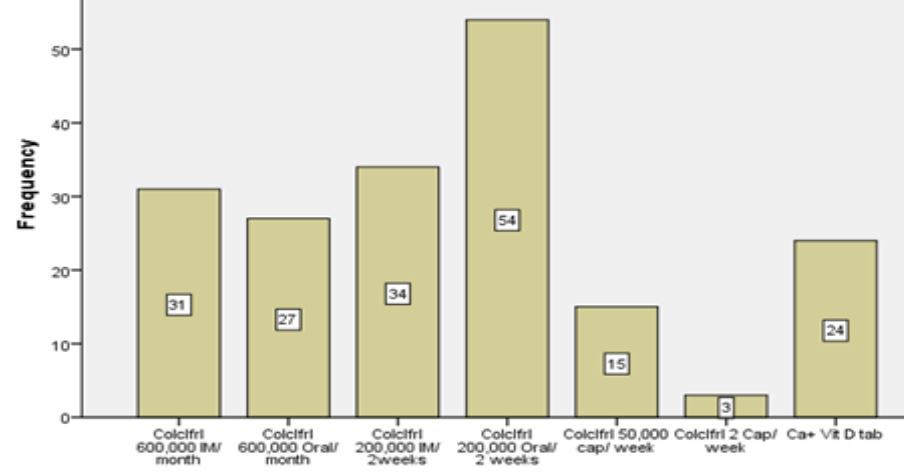Doctors not consistent on prescribing Vitamin D (Pakistan in this case)
Knowledge Attitude and Practices about Management of Vitamin D Deficiency among Doctors in Pakistan
Pak J Med Res Vol. 57, No. 2, 2018
Madeeha Hassan , Muhammad Shais Khan , Muhammad Rehan , Tayyaba Tariq , Ali Jawa, S H Waqar
📄 Download the PDF from VitaminDWiki
Dosing Variety

Background: Hypovitaminosis D is a common health issue in Pakistan because of its high prevalence. The awareness and practices of doctors treating vitamin D deficiency needs to be highlighted, as it will help in managing this public issue.
Objectives: To assess knowledge, attitude and practices for diagnosing and treating hypovitaminosis D among practicing doctors in Pakistan.
Subjects and Methods: Clinicians from different cities of the Pakistan were participated for a cross-sectional descriptive questionnaire based study about their approach in treating vitamin D deficiency. Results were analyzed using SPSS version 20. Descriptive statistics were calculated.
Results: One hundred eighty eight (188) practicing doctors from 21 different cities of Pakistan participated in the study. Majority (85.6%, n=161) prescribed vitamin D levels in patients of hypovitaminosis D. It is empirically treated by 101 (53.7%). Most clinicians (84%, n=158) prescribe Cholecalciferol, 19 (10.1%) Alfacalcidol and 11(5.9%) prescribe Calcitriol as a vitamin D supplement, while 155 (82.4%) prescribe a maintenance dose.
The prescription form preferred by doctors is tablets by 49 (26.1%), capsule by 29 (15.4%), oral injections by 68 (36.2%) and intra-muscular by 42 (22.3%). As a follow up tool, 84 (42.6%) clinicians order serum 25(OH) D and serum calcium levels, 102 (54.3%) assess patients by improvement in clinical symptoms and 3(1.9%) use both strategies for assessment. Nutritional advice was also given by most doctors.
Conclusion: There is no uniform approach for diagnosing and treating hypovitaminosis D among practicing doctors in Pakistan. A great variability and gap is seen in prescription options, dosing frequency and duration. This highlights the importance of need for a national guideline regarding prophylaxis, diagnosis and treatment of vitamin D deficiency.
